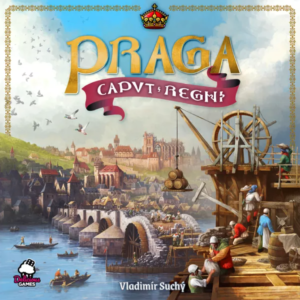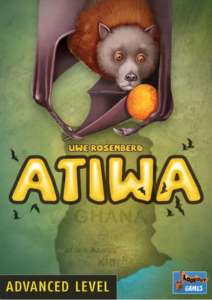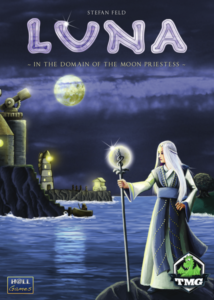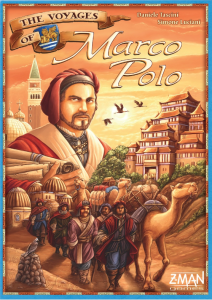- Learning time
- 60 minutes
- First play time
- 150 minutes
Woodcraft
Designed by: Ross Arnold,Vladimír Suchý
In Woodcraft, you are woody craftspeople, harvesting wood and using it to make wooden articles like chairs, toolboxes, treasure chests and so on. But despite the cutesy appearance and bucolic theme, it’s actually a fairly complex undertaking. You won’t end up with splinters, but you may need a nice cup of tea to recover…
In each game there are 14 rounds and in each round, you usually take a single action. The actions are many, and involve buying or exchanging lumber (represented by dice), buying woodcrafting materials like glue or woodsaws, hiring Helpers to improve your turn-by-turn capabilities, planting trees (which grow at the start of each subsequent round) or making improvements to your workshop, which is represented by your own player board. Here you house your helpers and store your lumber, as well as blueberries (essentially money) and any other things such as tools. You also have your orders here, and this give you direction in the game, because fulfilling orders is kind of a primary objective: an order might want three dice (lumber, remember!) some wood glue and a woodsaw. Once you have all that stuff you can instantly complete the order and gain the rewards – usually, blueberries and points. But it’s a little complicated because the lumber comes in three distinct types – green, yellow, brown – and not only do the different colours have different values when you buy and sell them, the orders will demand a specific colour in a specific number: for instance to make a picture frame I need brown dice values 5 and 3, green dice value 1 and some wood glue as well. So, when I’m taking actions I’m looking to gather that stuff as quickly as possible; not only so I can then move onto my next order, but also because orders are more valuable the quicker you complete them.
Let’s return to the actions, because how they are selected is also a little ornate. Usually you can take any one of the seven basic actions: they are represented by action tiles laid out on a shared ‘action wheel’ board that has a rotating disc at its centre. Taking one means simply choosing that action tile and moving it on to the next quadrant. Each action tile has what it does represented pictorially on it. But the way the action board works means action tiles that sit unchosen for longer begin to accrue bonuses, so the game isn’t just about looking at your orders to see what you need, it’s also about timing; about seeing what the optimal move is on a given turn that might be better for you in the long run.
So the wheel itself has a tactical feel, but the game also offers strategic paths: if you’re generating a lot of cash you can actually use it to buy points. If you gather a lot of helpers you might be doing less order fulfilment in the early game, but building an ‘engine’ for some spectacular progress in the later rounds. When the 14th round is played to it’s conclusion, the player with the most points wins.
The guru's verdict
-
Take That!
Take That!
Not much. Interaction is limited to players taking action tiles while there's still a juicy bonus or two attached to it.
-
Fidget Factor!
Fidget Factor!
Moderate with two, climbing notably with three or four.
-
Brain Burn!
Brain Burn!
Woodcraft's nub of how you choose actions isn't too complicated, but there are a lot of other considerations going on around it as well
-
Again Again!
Again Again!
If you like the puzzle here, there's plenty of in-built variation in the helpers and orders. How the actions are selected offer little iterations on flavour too.










Sam says
Subjectivity klaxon! Fans of chin-scratching, brow-furrowing puzzles can take my opinion with a big spoon of salt. For me, I found Woodcraft an incongruous mix of 'cute woodland creature' theme and heavy, plate-spinning mechanics where there was so much to consider it was hard to really find the fun in it. I'm not by default someone who loves heavy games anyway, and especially if - as with Woodcraft - there's no direct interaction at all. What you have here is a dense confection of game mechanics - we didn't get around to mentioning tools in our overview, but they appear almost as a little side-game - clustered together in a way that is undeniably clever, but - for me at least - just didn't feel playful. And I say this as a fan of designer Suchy's previous games Pulsar and Underwater Cities: those games have minimal interaction as well, but they offer a sense of story, and story on a grand scale. Even games where you build a farm can feel engaging on their own terms; through gentle harvesting and breeding animals. Maybe it's because that sense of narrative is gapingly absent in Woodcraft, or maybe it's because making a picture frame doesn't feel that exciting an objective. Either way, Woodcraft feels expertly crafted, but I'm patently not the target audience.